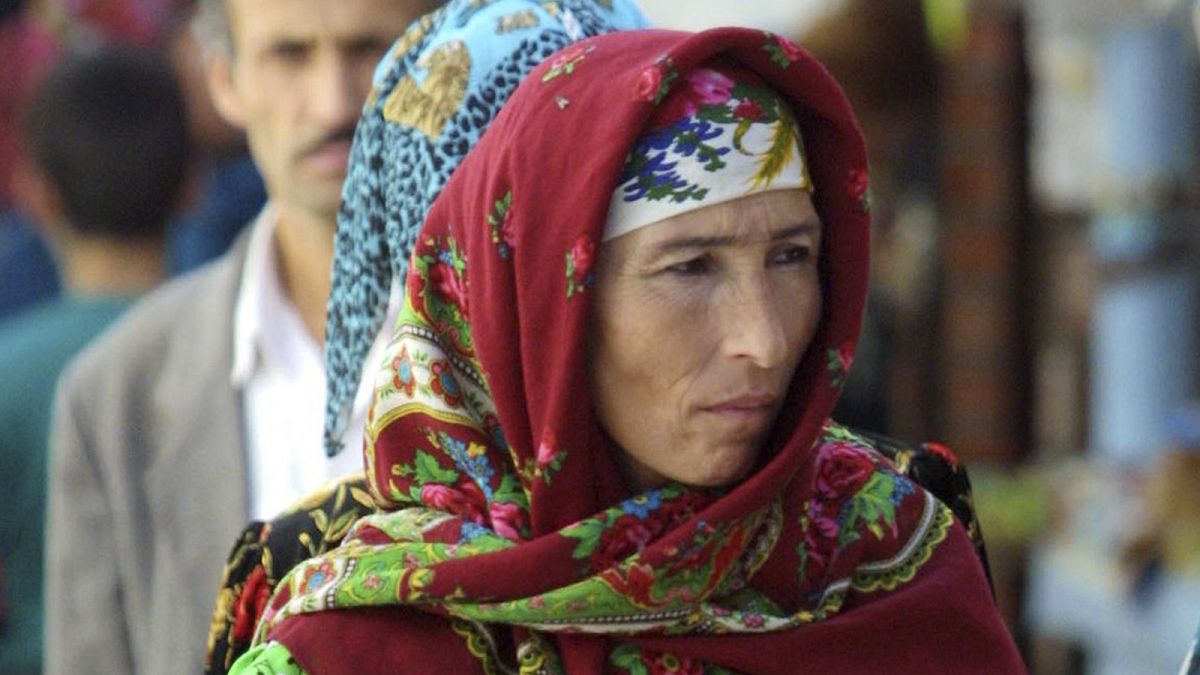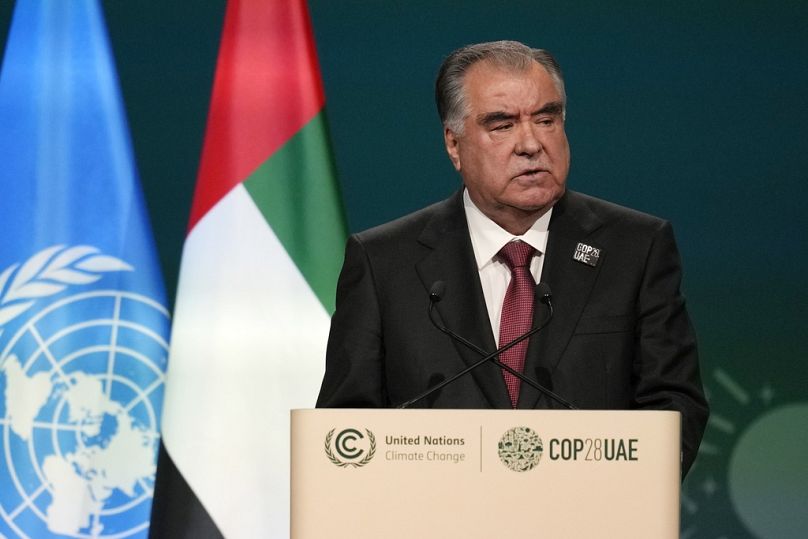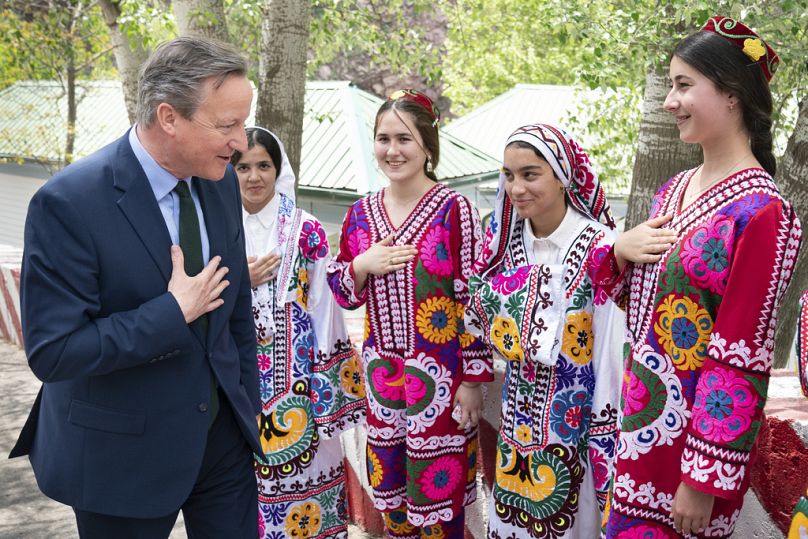Tajikistan’s government passed a law banning the hijab, the latest in a string of 35 wide-ranging religion-related acts, in a move described by the government as “protecting national cultural values” and “preventing superstition and extremism”.
The law, approved by parliament’s upper house Majlisi Milli last Thursday, bans the use of “foreign clothing” — including the hijab, or head covering worn by Muslim women.
Instead, Tajikistan citizens are encouraged to wear Tajik national dress.
Those violating the law are set to be fined on a scale ranging from 7,920 Tajikistani somoni (almost €700) for ordinary citizens, 54,000 somoni (€4,694) for government officials and 57,600 somoni (about €5,000) if they are a religious figure.
Similar laws passed earlier this month affect several religious practices, such as the centuries-old tradition known in Tajikistan as “iydgardak,” in which children go door-to-door to collect pocket money on Eid holidays.
The decision was seen as surprising, as the central Asian country of some 10 million is 96% Muslim, according to the last census in 2020.
Yet, it is a reflection of the political line that the government has been pursuing since 1997.
Turning mosques into tea houses
In Tajikistan, the government of president-for-life Emomali Rahmon has had its sights set on what they describe as extremism for a long time.
After a peace deal to end a five-year civil war in 1997, Rahmon — who has been in power since 1994 — first found a way to coexist with the opposition Tajikistan Islamic Resurrection Party (TIRP), which was granted a series of concessions.
According to the UN-brokered agreement, representatives of the pro-Sharia TIRP would share 30% of the government, and TIRP was recognised as the first post-Soviet political party in Central Asia founded on Islamic values.
However, Rahmon managed to push out TIRP from power despite the party becoming more secular over time. In 2015, he then managed to shut down TIRP altogether, designating it a terrorist organisation after the party allegedly took part in the failed coup attempt in which General Abdulhalim Nazarzoda, a key government bureaucrat, lost his life.
Meanwhile, he turned his attention to what his government described as “extremist” influences among the citizens.
After first banning the hijab in public institutions, including universities and government buildings, in 2009, the regime in Dushanbe pushed for a number of formal and informal rules meant to prevent neighbouring countries from exerting influence but also strengthen its control over the country.
While there are no legal restrictions on beards in Tajikistan, multiple reports state that law enforcement has forcibly shaved men sporting bushy beards, seen as a potential sign of someone’s extremist religious views.
The Law on Parental Responsibility, which entered into force in 2011, penalises parents who send their children to religious education abroad, while according to the same law, those under 18 are banned from entering places of worship without permission.
A 2017 statement by the Tajikistan Religious Affairs Committee said that 1,938 mosques were closed down in just one year, and places of worship were converted into tea shops and medical centres, for example.
The latest set of laws was said to have been spurred by the deadly Crocus City Hall attack in Moscow in April. Four of the attackers captured by Russian law enforcement — said to be part of the Khorasan branch of the so-called Islamic State, or ISIS-K — had Tajikistan passports, according to Russian authorities.
President Rahmon, who said he aimed to make Tajikistan “democratic, sovereign, law-based and secular” — quoting the opening line of the 2016 Constitution — advised the people to “Love God with (their) heart”.
“Do not forget your own culture,” he stated.
The US Commission on International Religious Freedom (USCIRF) designated Tajikistan a “country of special concern” in its 2023 report.
Where else is the hijab banned?
In Europe, the hijab has been a point of contention in a number of countries.
Dutch far-right politician Geert Wilders — whose party recently formed a government after scoring an unprecedented win in the general election — has long proposed a ban on hijab as part of a much larger set of anti-Islam measures, including a ban on the Muslim holy book, the Quran, and any non-western immigration.
In 2004, France introduced legislation prohibiting wearing “symbols or clothes through which students conspicuously display their religious affiliation,” including the hijab, in public primary schools, middle schools, and secondary schools, but not its universities.
A similar law was passed in Austria in 2017, banning headscarves in schools for children up to 10 years of age, with parents facing potential fines of €440 if they chose to send their kids to school wearing a hijab regardless.
Italy has banned the hijab-like swimsuit, also known as the “burkini”, from its pools and beaches since 2009. Several cases of women being fined or prohibited from swimming or sunbathing in public have caused turmoil in recent years, particularly in the country’s north.
In addition, Germany, Belgium, Norway and Bulgaria all have laws prohibiting the use of face-covering garments, known as burqas, in schools or public institutions.
Opponents of such laws maintain that banning the hijab, in secular countries in particular, is a slippery slope that might see Europe’s Muslim communities disenfranchised down the line.
Some on both sides of the argument claim this is a women’s rights issue: while those opposing the hijab and the burqa say they restrict a woman’s choice of how to dress, others who are against the ban believe that women should also have the right to choose to wear either if they feel it’s a part of their identity.
In 2013, the Conservative government of David Cameron rejected the calls to ban the burqa in public, stating that “women should have the freedom to choose what to wear”.
In Ireland, then-Taoiseach Leo Varadkar also rejected the possibility of a ban on burqas in 2018, saying, “I don’t agree with the doctrine of every religion or necessarily any religion, but I do believe in the freedom of religion.”
Several Muslim-majority countries have banned the burqa and hijab in public schools, universities, or government buildings, including Tunisia (since 1981, partially lifted in 2011), Kosovo (since 2009), Azerbaijan (since 2010), Kazakhstan and Kyrgyzstan.
By Ramazan Dengiz & Emre Basaran


